Daily Self-Care Tracker
Build Your Self-Care Plan
Track Your Progress
Weekly Self-Care Report
| Activity | Frequency | Benefits | Completion |
|---|---|---|---|
| Exercise | 3x/week | Reduces hyperarousal | 2/3 |
| Mindfulness Breathing | 2-3x/day | Calms nervous system | 7/7 |
| Grounding Techniques | As needed | Anchors to present | 5/5 |
| Journaling | 10min daily | Processes trauma | 3/3 |
| Social Support | Weekly | Provides validation | 1/1 |
Living with posttraumatic stress disorder (PTSD) can feel like walking through a minefield every day-flashbacks, night sweats, racing thoughts, and a constant sense of danger. While professional treatment is essential, everyday habits can either calm that storm or make it louder. That’s where self-care steps in: a toolbox of intentional actions that help the body and mind stay resilient while therapy does the heavy lifting.
Self‑Care is a set of conscious activities aimed at preserving or improving one’s physical, emotional, and mental well‑being. For anyone with PTSD, self‑care isn’t a luxury; it’s a survival strategy that reduces symptom intensity, improves sleep, and creates a stronger foundation for treatment.
Understanding PTSD and Why Self‑Care Matters
Posttraumatic Stress Disorder (often abbreviated PTSD) is a mental‑health condition that can develop after experiencing or witnessing a traumatic event. According to the World Health Organization, about 3.5% of people worldwide live with PTSD, and the numbers climb dramatically among veterans, survivors of abuse, and first responders.
The brain changes linked to PTSD-overactive amygdala, reduced hippocampal volume, and dysregulated stress hormones-mean the nervous system is stuck in a “fight‑or‑flight” mode. Self‑care actions that calm the nervous system (like controlled breathing or gentle movement) directly counteract these physiological shifts.
Core Pillars of Self‑Care for PTSD
- Physical Care: exercise, sleep hygiene, nutrition, and regular medical check‑ups.
- Emotional Care: journaling, expressive arts, and safe emotional expression.
- Social Care: trusted friends, support groups, and guided peer interaction.
- Spiritual/Meaningful Care: mindfulness, meditation, nature walks, or any practice that gives a sense of purpose.
- Cognitive Care: grounding techniques, reality‑checking, and cognitive‑behavioral tools.
Each pillar feeds the others. Regular exercise improves sleep, which in turn supports emotional regulation, making it easier to engage socially.
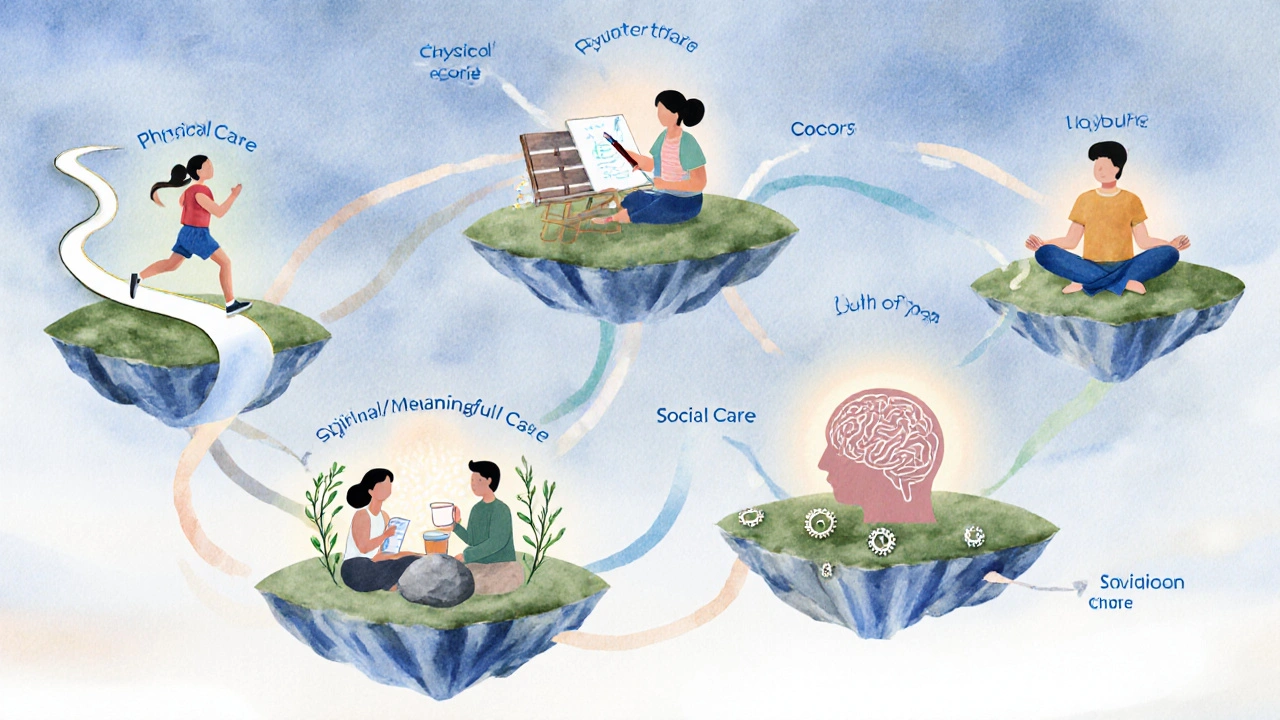
Practical Self‑Care Techniques That Work
1. Exercise - Move to Reset
Exercise releases endorphins and lowers cortisol, two chemicals that directly lessen PTSD‑related hyperarousal. Aim for 30 minutes of moderate activity- brisk walking, cycling, or yoga- at least three times a week. If a gym feels overwhelming, start with a short walk in the garden and gradually increase duration.
2. Sleep Hygiene - Protect Your Night
Sleep hygiene includes a consistent bedtime, a cool dark room, and a wind‑down routine without screens. For PTSD, a nightly ritual of a warm shower, a few minutes of breathing, and a gratitude journal can cue the brain that it’s safe to shut down.
3. Nutrition - Fuel the Brain
Nutrition affects neurotransmitter balance. Foods rich in omega‑3 fatty acids (salmon, walnuts), magnesium (spinach, pumpkin seeds), and B‑vitamins (whole grains, legumes) support mood stability. Avoid excess caffeine and sugar, which can spike anxiety.
4. Mindfulness & Breathing - Ground the Nervous System
Mindfulness trains the brain to notice thoughts without reacting. A simple 4‑7‑8 breath (inhale 4 seconds, hold 7, exhale 8) taken three times can calm a flashback in minutes. Apps that guide a five‑minute body scan are helpful for beginners.
5. Grounding Techniques - Stay in the Present
Grounding involves using the five senses to anchor yourself. The “5‑4‑3‑2‑1” method- name five things you see, four you feel, three you hear, two you smell, one you taste- creates a sensory bridge back to the present moment.
6. Journaling & Expressive Writing - Process Emotions
Writing for ten minutes about a recent trigger, without editing, can reduce the intensity of that memory by up to 30% (research from the University of Texas). Use prompts like “What am I feeling right now?” or “What would I say to my younger self?”
7. Social Support - Connect Safely
Isolation worsens PTSD symptoms. A weekly phone call with a trusted friend, a community therapy group, or a veteran’s meetup provides validation and reduces the feeling of being alone. If in‑person gatherings are too stressful, start with online forums moderated by mental‑health professionals.
Integrating Self‑Care With Professional Treatment
Self‑care isn’t a substitute for therapy, but it amplifies the benefits of evidence‑based approaches such as Cognitive‑Behavioral Therapy (CBT) and Eye Movement Desensitization and Reprocessing (EMDR). For example, a client who practices daily grounding is better able to stay present during EMDR sessions, reducing the risk of runaway dissociation.
Talk to your therapist about which self‑care habits align with your treatment plan. Many clinicians provide a “self‑care contract” that outlines realistic daily goals, making it easier to track progress.
Common Pitfalls and How to Avoid Them
- Over‑exercising: Pushing too hard can trigger fatigue and increase irritability. Stick to a moderate schedule and listen to body cues.
- All‑or‑nothing thinking: Missing one day of journaling shouldn’t be a reason to quit. Build flexibility-if you’re too tired, do a five‑minute breathing exercise instead.
- Using self‑care as avoidance: Skipping therapy appointments because you “feel fine” after a good night’s sleep can delay recovery. Keep therapy as a non‑negotiable anchor.
- Relying on substances: Alcohol or drugs may seem to quiet symptoms temporarily but worsen long‑term outcomes.
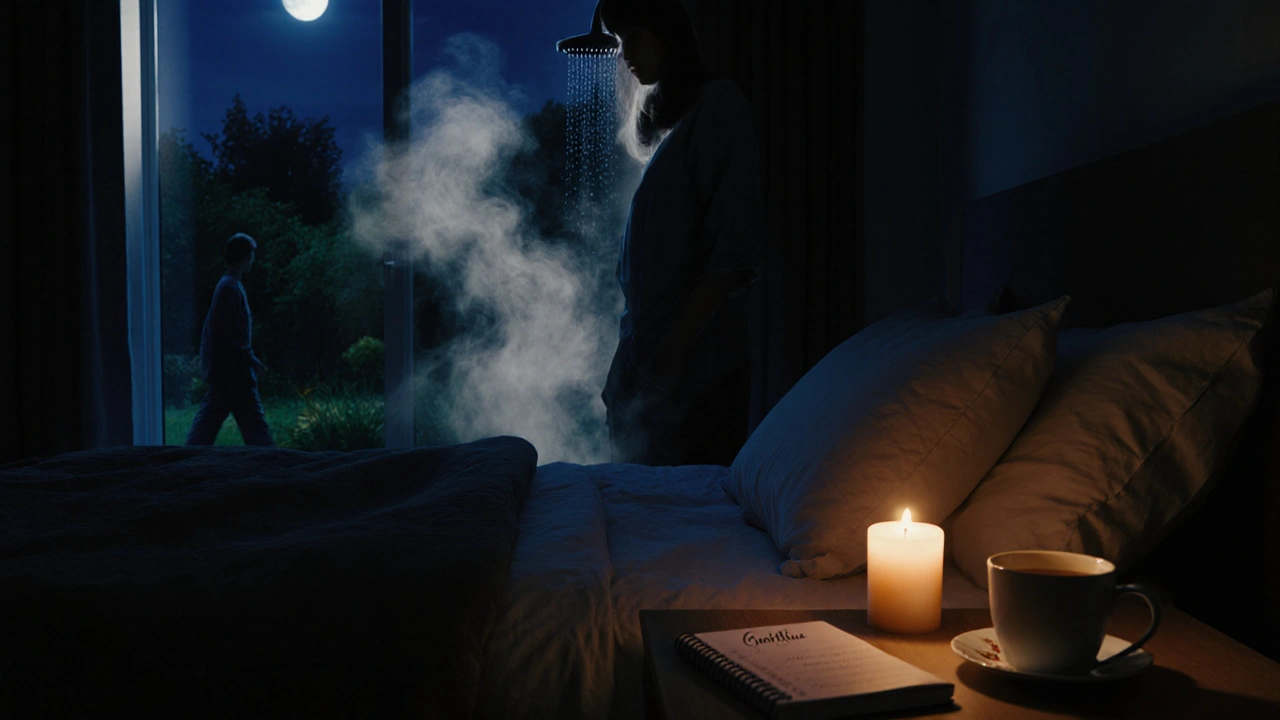
Building a Personalized Self‑Care Plan
Start with a simple worksheet. Write down three activities from each pillar you enjoy or feel comfortable trying. Assign a realistic frequency (daily, twice‑weekly, weekly). Review the plan every two weeks and adjust based on what helped or what felt burdensome.
| Strategy | Primary Benefit | Typical Time Commitment | Impact on Core PTSD Symptoms |
|---|---|---|---|
| Exercise (moderate cardio) | Reduces hyperarousal, improves mood | 30min, 3×week | Decreases re‑experience, improves sleep |
| Mindfulness breathing | Calms nervous system | 5min, 2‑3×day | Lessens flashbacks, lowers anxiety |
| Grounding (5‑4‑3‑2‑1) | Anchors to present | 2‑3min, as needed | Reduces dissociation, curbs intrusive thoughts |
| Journaling | Processes trauma narrative | 10min, daily | Decreases avoidance, improves emotional regulation |
| Social support (peer group) | Provides validation | 1hour, weekly | Improves overall mood, reduces isolation |
Next Steps and Resources
If you’re new to self‑care, start small: a 5‑minute walk after breakfast, a nightly breath‑focus, and a brief gratitude note before bed. Track your mood in a simple spreadsheet-column A for date, B for sleep quality (1‑5), C for anxiety level (1‑10), D for self‑care activity completed. Patterns will emerge, showing which habits shift your scores the most.
Consider these reputable resources for deeper guidance:
- National Center for PTSD - free hand‑outs on coping skills.
- Mindful.org - beginner meditation series (no‑cost).
- Veterans Affairs (VA) “Well‑Being” program - offers community walking groups.
- Books: “The Body Keeps the Score” by Bessel van der Kolk (offers concrete self‑care exercises).
Remember, self‑care is a skill you can practice daily, just like brushing your teeth. Over time the habit becomes automatic, giving your brain the stability it needs to process trauma more effectively.
Frequently Asked Questions
Can self‑care replace therapy for PTSD?
No. Self‑care supports recovery but does not address the underlying trauma the way evidence‑based therapies like CBT or EMDR do. It works best as a complement to professional treatment.
How often should I practice grounding techniques?
Grounding can be used any time you feel a flashback or dissociation beginning. Many people find checking the five senses every few hours in stressful periods helpful.
Is it okay to exercise on a day when I feel triggered?
Gentle movement like stretching or a short walk can actually calm the nervous system. Avoid high‑intensity workouts if you’re already highly aroused; listen to your body’s signals.
What’s a simple night‑time routine for better sleep?
Turn off screens at least 30minutes before bed, take a warm shower, do a 4‑7‑8 breath, and write down three things you’re grateful for. Consistency signals safety to the brain.
How can I involve my family in my self‑care plan?
Share one or two activities you’d like support with-maybe a joint walk or a check‑in call. Ask them to respect your boundaries during triggers and celebrate small wins together.

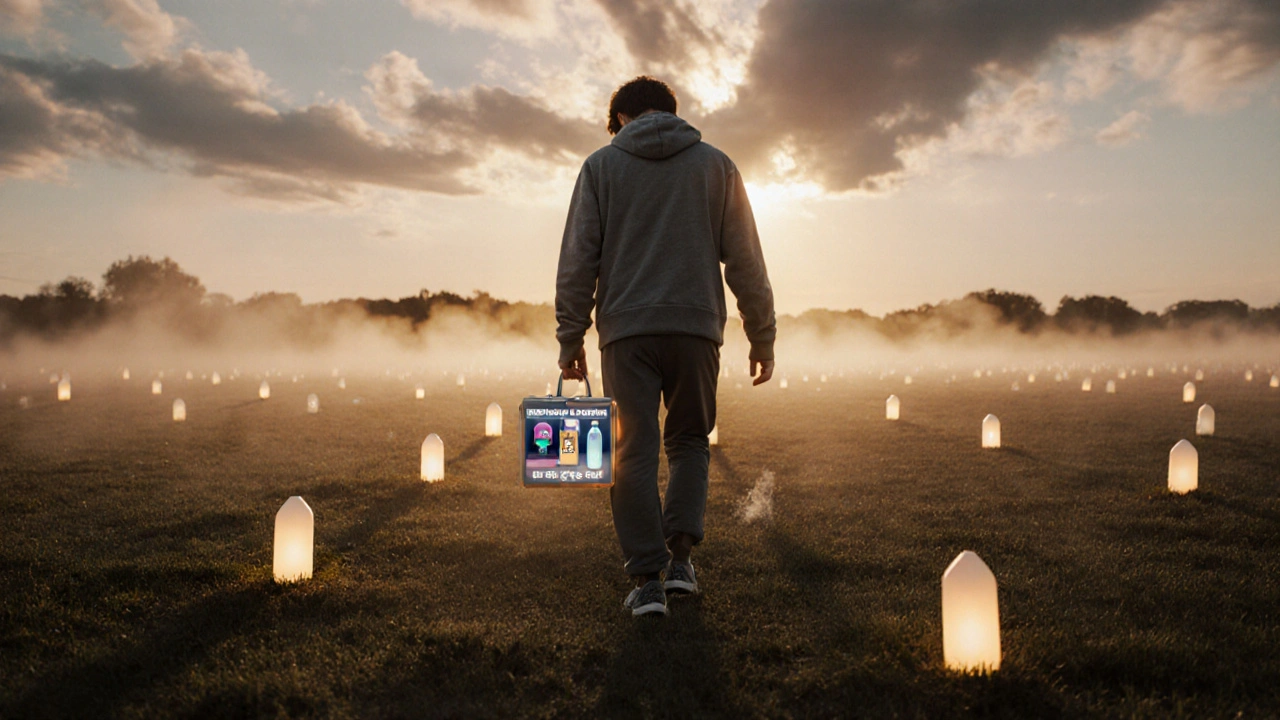
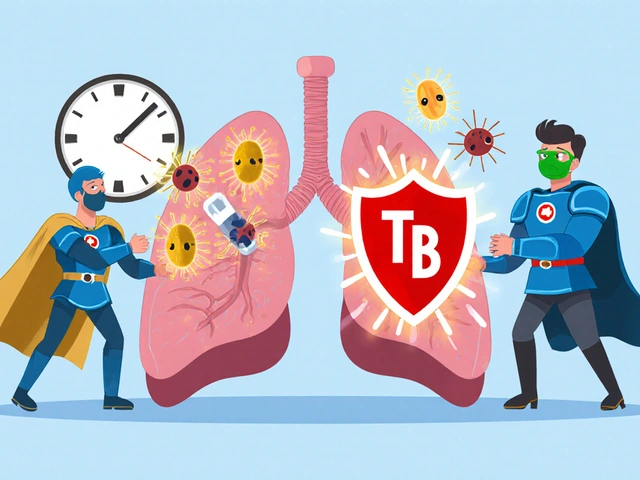
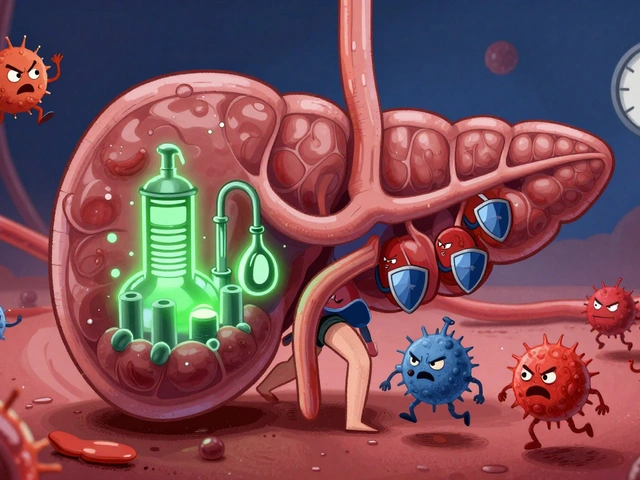


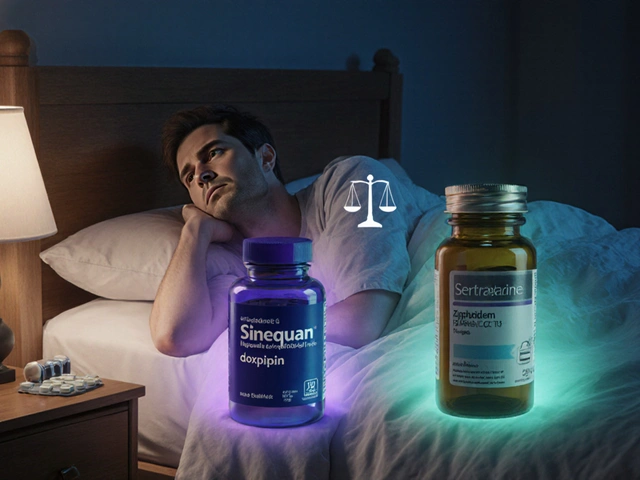
Dilip Parmanand
October 12, 2025 AT 02:08 AMSelf‑care isn’t a luxury; it’s a lifeline.
Sarah Seddon
October 22, 2025 AT 19:35 PMWow, this guide hits all the right notes! 🌟 The way you break down each pillar makes it feel doable, even on rough days. I love the vivid examples – they’re like a mental toolbox you can actually reach into. Remember, it’s okay to start tiny; a five‑minute walk is just as heroic as a marathon. Keep shining this light for everyone who needs a gentle nudge toward healing.
Ari Kusumo Wibowo
November 2, 2025 AT 12:01 PMTotally agree that self‑care is a game‑changer for PTSD. The grounding tricks are super practical – I use the 5‑4‑3‑2‑1 method almost every afternoon now. Exercise doesn’t have to be intense; even a short stretch can reset the nervous system. I also find that mixing in a quick journal entry helps me process the day without feeling overwhelmed. Keep the ideas rolling, they’re real lifelines.
Hannah Gorman
November 13, 2025 AT 05:28 AMReading through this, I’m struck by the sheer breadth of evidence that underpins each recommendation, and that in itself warrants a careful, measured consideration. First, the neurobiological rationale for exercise is well‑documented: aerobic activity modulates cortisol and boosts endorphin release, which directly counters hyperarousal. Second, sleep hygiene, with its emphasis on circadian regularity, addresses the dysregulated REM patterns often observed in trauma‑exposed populations. Third, nutrition-particularly omega‑3 fatty acids-has been linked to membrane fluidity and neurotransmitter synthesis, thereby supporting mood stability. Fourth, the mindfulness and breathing protocols outlined here echo the findings of multiple randomized controlled trials that demonstrate reductions in intrusive symptom frequency. Fifth, grounding techniques, such as the 5‑4‑3‑2‑1 method, provide an immediate sensory anchor that can prevent dissociative episodes from escalating. Sixth, expressive writing, as researched by Pennebaker, shows quantifiable decreases in physiological stress markers when practiced consistently. Seventh, the emphasis on social support cannot be overstated; peer‑validated groups have been shown to mitigate feelings of isolation and improve treatment adherence.
What is perhaps most compelling is the integrative nature of the plan: it does not treat any of these pillars in isolation but rather highlights their synergistic potential. Regular physical activity improves sleep quality, which in turn enhances emotional regulation, making it easier to engage socially and practice mindfulness. Moreover, the suggestion to track mood and activity in a simple spreadsheet is a pragmatic step toward self‑monitoring that aligns with the principles of self‑efficacy. By recording sleep scores, anxiety levels, and self‑care actions side by side, individuals can identify patterns that might otherwise remain invisible.
Nevertheless, it is essential to acknowledge common pitfalls. Over‑exercising may trigger fatigue and irritability, while an all‑or‑nothing mindset can sabotage progress when a day is missed. Likewise, using self‑care as an avoidance strategy can delay necessary therapeutic interventions. The guide wisely warns against reliance on substances, which historically serve as maladaptive coping mechanisms that exacerbate trauma‑related symptoms.
In sum, this framework is not merely a checklist; it is a comprehensive, evidence‑based roadmap that, if followed with flexibility and self‑compassion, can substantially augment traditional PTSD treatments. The recommendations are thorough, actionable, and grounded in a solid scientific foundation, making this resource a valuable adjunct for both clinicians and those navigating their recovery journey.
Tatiana Akimova
November 23, 2025 AT 22:55 PMGreat point about grounding – I’ve found the 5‑4‑3‑2‑1 trick saves me when flashbacks hit. Keep the momentum going, you’re doing awesome!
Calandra Harris
December 4, 2025 AT 16:21 PMGrounding works because it forces the brain to focus on present sensory input.
Dan Burbank
December 15, 2025 AT 09:48 AMWhile the article provides a solid foundation, one must consider the sociocultural context in which self‑care practices are adopted. For instance, mindfulness meditation, though beneficial, may feel alien to individuals raised in communities that prioritize collective rituals over solitary introspection. Moreover, the recommendation to track mood via spreadsheets assumes a level of digital literacy that is not universal; alternative low‑tech methods, such as paper journals or verbal check‑ins with trusted peers, can be equally effective. It is also worth noting that the emphasis on "nutrition focus" often overlooks food insecurity, a reality for many veterans and low‑income survivors. Without addressing these structural barriers, the proposed self‑care regimen risks becoming an aspirational ideal rather than an accessible tool. In light of these considerations, a nuanced, flexible approach that adapts to personal circumstances is essential for genuine healing.